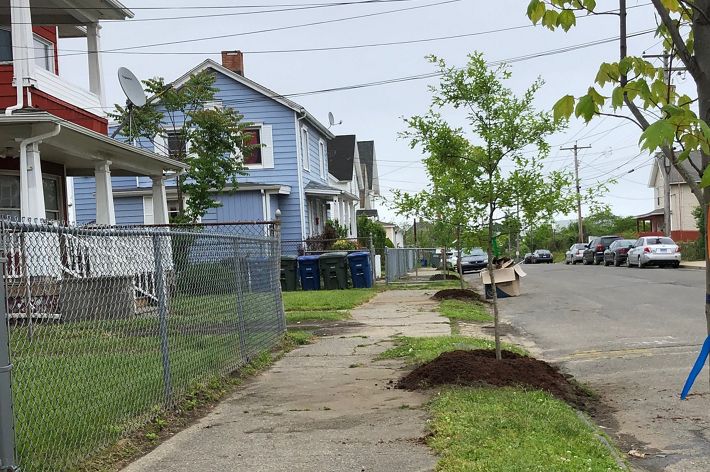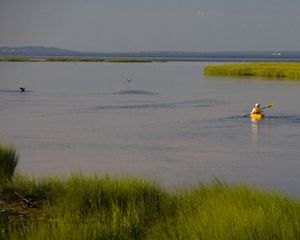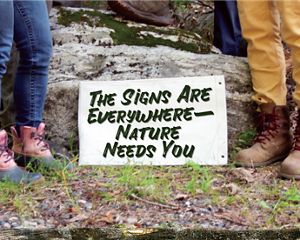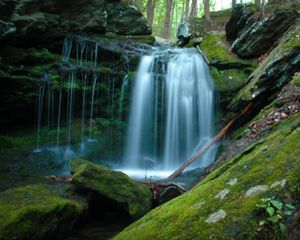Urban Conservation
Cities for nature, and nature for cities.
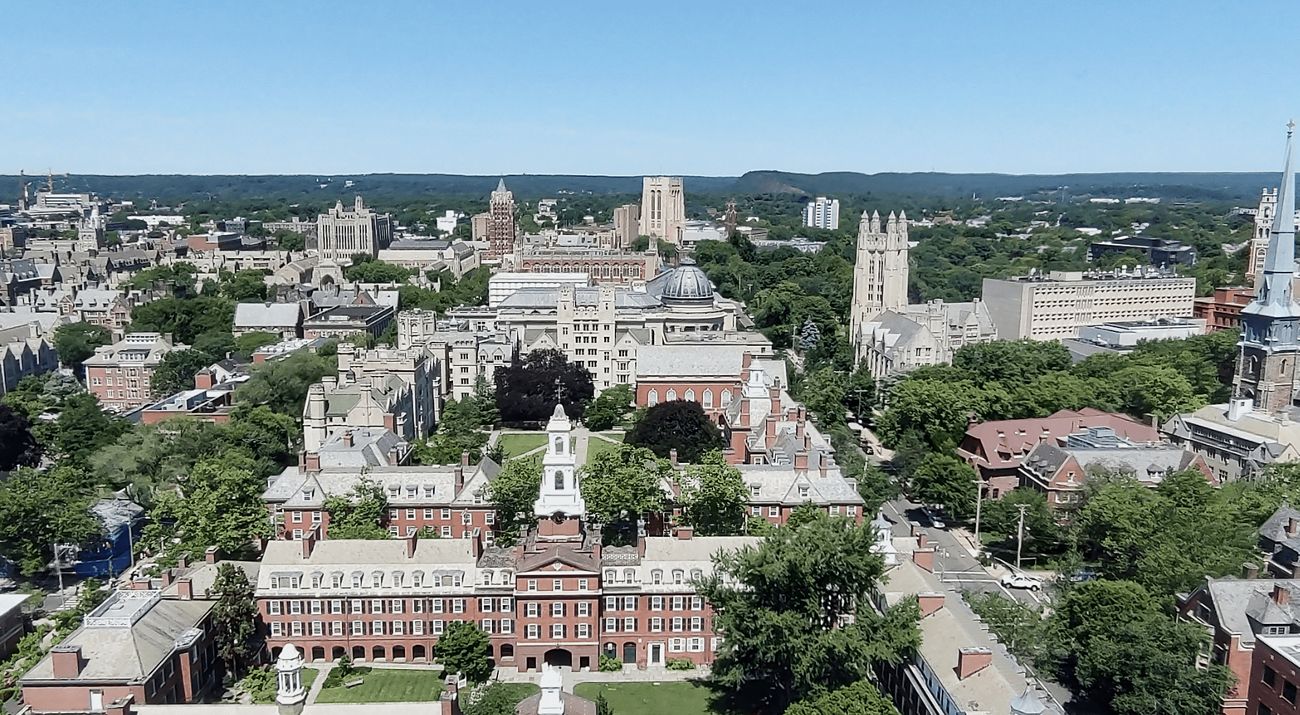
Nature surrounds you on a hike in the woods, or a walk at the shore, or taking pictures in a field of flowers. It is also around when you are in a city. Notice the trees along sidewalks and native plants in a local park. Conservation in urban areas is an essential part of protecting nature and people everywhere.
For The Nature Conservancy, urban conservation is part of an expanded effort to build natural resilience within our cities to benefit the health and well-being of both humans and wildlife. It also provides nature-based solutions that can help to advance community priorities.
TNC's urban conservation program in Connecticut celebrates cities, and their density, for the environmental good that they provide, such as:
- reduced vehicle miles traveled and associated energy demand
- reduced conversion of open space and agricultural lands
- improved energy efficiency of multi-family housing
TNC also recognizes that historical and ongoing segregation leaves many city residents in desperate need of their fair share of nature in their community. Lifting up the environmental benefits of cities while addressing their challenges will bring this vision to life: a future where all communities are able to maximize the health and resilience benefits of nature.
Advancing Nature in Cities
In 2023, TNC received a $2.2 million federal grant to enhance the depth and breadth of community collaboration to address the acute tree canopy needs of many Connecticut cities. Broadly known as the Connecticut Urban Forest Network for Resilience, the initiative aims to support the state’s urban forestry capacity, particularly in communities with very low tree canopy. The initiative is funded in part from a five-year award of the U.S. Forest Service’s Urban and Community Forestry Program through the Inflation Reduction Act.
Trees, as with all aspects of our complex and intertwined natural and built environments, provide many benefits. From wildlife habitat and beauty to sequestering carbon, trees are a powerhouse.
However, keeping our communities cool and livable is one of the most critical services that trees provide in the face of a changing–and warming–climate. Trees represent an essential tool in reducing what is known as the urban heat island effect, which is essentially the way that the built environment–buildings, roads, parking lots–absorb and increase heat. Through a process called evapotranspiration (essentially the same process in which sweating cools down the human body), and to a lesser extent shade, trees can help to prevent the worst of the heat island effect.
Trees also filter air and water, including storm water, storing and slowly filtering the runoff that would otherwise cause flooding or flow into local waterways. Plus, they have a scientifically proven impact on mental health and well-being.
All of the many benefits provided by trees will influence the Connecticut Urban Forest Network for Resilience’s approach. Partners include the Connecticut Urban Forest Council, the Division of Forestry of the State of Connecticut Department of Energy and Environmental Protection, The Department of Natural Resources and the Environment at the University of Connecticut, and municipalities and community organizations from across the state.
Quote: Drew Goldsman
There are numerous approaches to caring for and expanding Connecticut’s urban forests, and many communities seek opportunities to learn from their peers. Time is of the essence, and bringing together communities across the state will maximize impact.

Case Study
Svihra Park Partnership
Foundational to TNC's urban conservation work is a partnership with the City of Bridgeport to leverage our land management expertise while engaging residents in park stewardship and planning. TNC teamed up with Read School, the City of Bridgeport and Aquarion Water Company to understand community concerns and priorities related to Svihra Park, a heavily wooded park adjacent to the K-8 school.
Due to the park being mostly wooded, there were perceptions that it was unsafe and should not be used by students. Throughout the project there was an understanding that TNC’s conservation approach, combined with the community's knowledge, could lead to a healthier, cleaner and safer park.
TNC continues to support projects in the park and at the school to improve access, beauty and ecological function. In continued collaboration with the school and the City of Bridgeport, TNC is leveraging a federally funded award aimed at reducing stormwater run-off while also creating a more welcoming and educational landscape.
“When I started working with our partners here, I didn’t imagine that in such a short time I would hear kids talking about recycling while helping build an outdoor classroom,” says Cynthia Fowx, TNC's director of Saugatuck Preserves.
TNC and its partners teamed up to clean up—and inspired Read School students to make Svihra Park their own.
Lisa Nelson, Home School Coordinator at Read School, adds, “This is a place where students can get out there and learn about nature, a place for them to be able to get their hands dirty and to make a difference. It feels good for them."
A Model for Nature-based Solutions
Building on the early learning and relationship-building related to Read School and Svihra Park, TNC has continued to explore more ways to partner with community groups to address access to nature and all of its benefits in Bridgeport. For example, TNC partnered with the city to identify places where nature-based solutions could have significant impact on wildlife and health and the well-being of residents. Through an Eco-Urban Assessment, the partners assembled information about air quality, flooding and access to green spaces around the city. Then they layered the basic data with additional information such as the presence of impervious surfaces and asthma rates.
After assembling all of the information, the team identified neighborhoods where trees, green stormwater systems and open spaces would make the biggest difference for people and nature. The Eco-Urban Assessment model is now available to other Connecticut cities that want a deeper understanding of where nature can bring solutions to some of the most pressing urban issues.

Case Study
Hall Neighborhood House
The Eco-Urban Assessment identified Bridgeport’s East Side as having a clear need for an investment in more nature. In response, TNC worked with partners and volunteers to install rain gardens, expand city parks, plant trees and engage the community in caring for these natural areas. This included working with Hall Neighborhood House, a local social services organization, to plant and care for 150 trees over the course of a year.
“We are grateful to The Nature Conservancy for their support and for bringing nature and wellness to our campus. The trees are a gift to our community,” says Bob Dzurenda, executive director at Hall Neighborhood House.
The work of supporting and cultivating networks of urban forest leaders, stakeholders and champions will take a range of forms, including community tree celebrations, community-to-community learning exchanges and amplifying stories from the field. These efforts celebrate the hard work of local leaders while bringing additional individuals and organizations into the fold.
